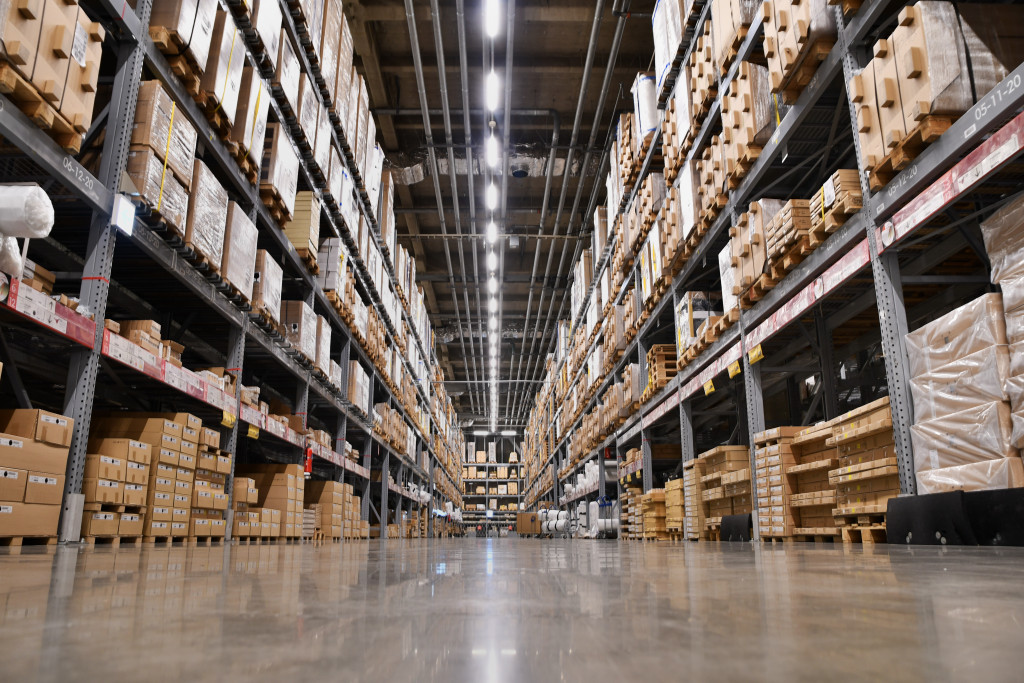- Warehouse services provide vital links in the supply chain, allowing businesses to reduce overhead costs and better meet customer demand.
- Warehouse management systems offer software and tools to optimize operations from inventory tracking to order fulfillment.
- Automation systems and software help businesses track inventory accurately and fill orders quickly and efficiently.
- Robotics can automate tedious tasks like sorting packages or loading delivery trucks efficiently and accurately.
- Investing in reliable transportation networks helps improve delivery times, reduce costs, and increase customer satisfaction.
The importance of warehousing services for businesses cannot be overstated. Warehousing provides a vital link in the supply chain, allowing companies to store and manage inventory effectively. By using warehouses, businesses can reduce overhead costs and improve their ability to meet customer demand.
A well-organized warehouse is essential for any company looking to increase profitability and efficiency. With proper warehousing, companies can better track their inventory and streamline their ordering and shipping operations. This allows them to make informed decisions about ordering, stocking, and pricing products. As such, warehousing serves an irreplaceable role in sustaining the success of many businesses.
The demand for such services might make you want to open a warehouse or manage your existing one more efficiently. Fortunately, there are lots of advancements that you can consider to make the most out of your warehousing operations. Here are a few to invest in for your business:
Warehouse Management System

Warehouse management systems (WMS) are essential for warehousing operations. They offer software and tools to help businesses optimize their warehouse operations, from inventory tracking and analysis to order fulfillment. WMS allows companies to maintain accurate inventory records, ensuring that orders can be filled on time with the right products. Additionally, advanced WMS systems offer features like automated order routing, supply chain visibility, and real-time data analytics to give companies insights into their operations.
With a WMS, businesses can better manage their inventory, increase storage efficiency, improve customer service levels, and reduce errors caused by manual processes. This leads to faster turnaround times for orders and improved profitability due to reduced overhead costs associated with manual labor. Furthermore, WMS systems provide an integrated view across all locations, allowing companies to identify market trends and make informed decisions based on data-driven forecasts.
Automation Systems

Automation systems and software are ideal for warehousing because they allow businesses to improve operations, reduce manual labor costs, and increase efficiencies. Automated systems can also help companies track inventory more accurately and ensure that orders are fulfilled quickly and accurately. Here are a few examples of automation systems that are perfect for warehousing:
Automated Storage & Retrieval Systems (AS/RS)
AS/RS systems allow companies to store goods in their warehouse more effectively by reducing the time necessary to locate specific items. AS/RS typically consists of an automated crane or lift truck system that transports items between various storage locations within a warehouse. These systems are designed to be highly efficient and accurate, allowing businesses to manage their inventory much more quickly and efficiently than manual processes. Industrial barcode scanner systems can also be integrated with AS/RS systems, allowing companies to scan and record real-time inventory information for better accuracy.
Pick-to-Light & Put-to-Light Systems
Pick-to-light and put-to-light systems automate order fulfillment processes by giving workers visual cues on where products should be placed when stocking shelves or retrieving items from storage. These systems use light indicators, such as LEDs or LCDs, which direct workers as they select and place items on shelves or in order bins. By utilizing these automated systems, businesses can streamline order-picking processes, reduce mistakes caused by human error, and speed up fulfillment times.
Automated Voice Ordering Systems
Automated voice ordering systems are ideal for warehouses that need to fill large customer orders quickly. These systems allow customers to place orders via a computerized voice response system which then sends the orders directly into the warehouse management software for immediate processing. This eliminates the need for employees to enter each customer’s information into their system manually; instead, the customer’s details can be entered automatically with just a few simple commands spoken into a microphone. This helps minimize errors while ensuring faster turnaround times on customer orders.
Warehouse Robotics
Robotics is becoming increasingly popular in warehouses due to its ability to easily and accurately automate tedious tasks such as sorting packages or loading delivery trucks. Robots can move items around warehouses quickly without taking breaks, meaning they never tire out as human workers do after long shifts. Additionally, robots can access hard-to-reach places within a warehouse much quicker than traditional methods; this allows businesses to keep better track of inventories stored in complex configurations within their warehouses with minimal effort required from staff overseeing operations.
Transportation Investment
Of course, warehousing will only be effective if goods can be moved in and out of the facility quickly and efficiently. To enhance their operations, companies should invest in their transportation networks to improve delivery times, reduce costs, and increase customer satisfaction. Investing in reliable fleets of trucks or using third-party transportation services may also benefit businesses looking to optimize their warehousing operations.
Final Thoughts
Overall, there are many advancements that you can consider when it comes to improving your warehousing operations. By investing in these innovative technologies and strategies, you can better manage inventories, optimize order fulfillment processes, and maximize profits. This is key for businesses looking to optimize their warehouse investments and ensure long-term success.








